OMCVD
Silvia Mittler
In this current research project both gold and palladium OMCVD precursors are synthesised and used to deposite
ultra thin films of palladium/palladium ions or pancake-shaped gold nanoparticles. The main interest is to use
these new metal structures for binding chemical and biological recognition sites via thiol (-SH) or sulfide bonds.
On the other hand the nucleation and growth process of these new kind of nanoparticles is still not fully understood.
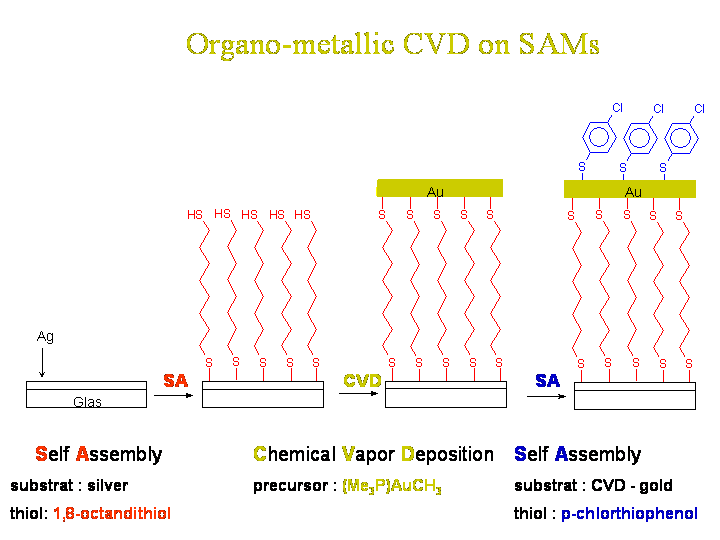
Templated deposition of metals - here an example with gold - via a precursor molecule in a chemical vapor deposition process
onto self-assembled monolayers (SAMs) carrying a function - here -SH -
being able to bind the metal to the surface or catalyse the deposition. A second SAM is self-assembled on top of the
deposited metal layer in a further step.
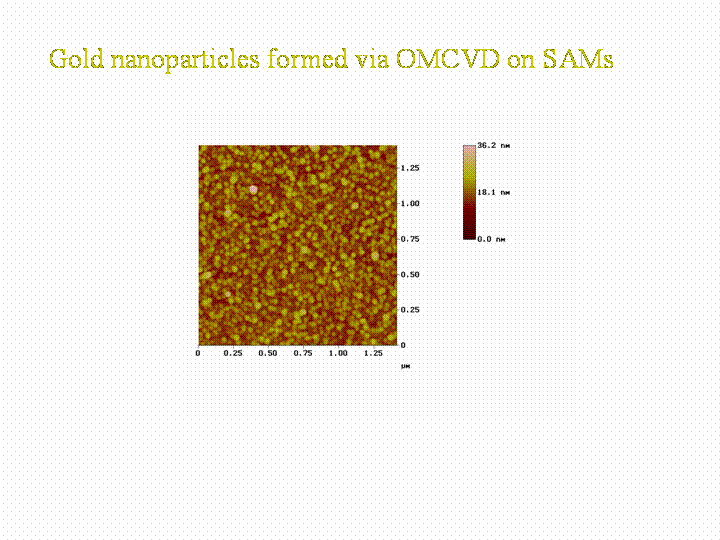
In the case of our gold precursor we form gold nanoparticles on the SAM surface. The form of the nanoparticles depend
on the density of -SH groups in the surface. By having a 100% coverage with -SH groups very falt particles are formed,
by decreasing the -SH density due to mixing -CH3 head groups in, the particles grow in a less flat manner.
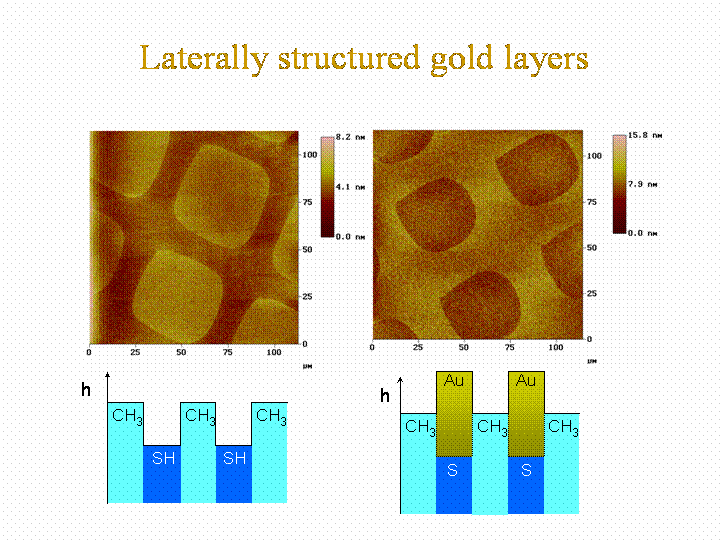
Contrast inversion images taken by an AFM due to selective growth of gold by
organo-metallic chemical vapor deposition onto -SH rich surfaces of a chemical laterally structured
self-assemled monolayer of organic molecules with different lengths.
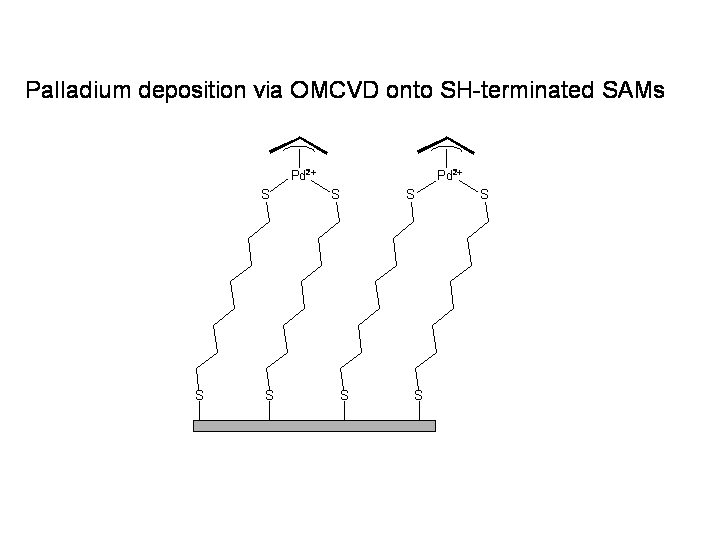
In the case of our palladium prercursor, we can bind Pd2+ ions to the SAM. This Pd2+ is able to bind a thiol
with a function. This concept should enable us to develop a "metalic glue" for thiol molecules on glassy
integrated optical devices without enhancing the optical losses.
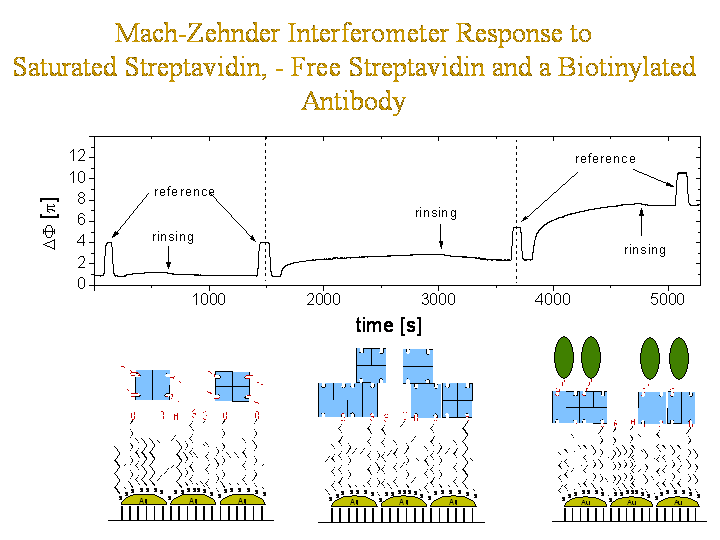
An optically integrated Mach-Zehnder interferometer was fabricated carrying gold nanoparticles on its active
surfaces. These nanoparticles were functionalized with a biotinilated SAM in order to bind the protein streptavidin. First one interferometerarm was rinsed with streptavidin previously
saturated with biotin to test for unspecific binding. In a second experiment free straptavidin was used to bind to the exposed biotin sites. In a third experiment biotinylated antibodies
were rinsed along one interferometer arm. Here the biotin bilds into the free and exposed binding pockets of the immobilised sytreptavidin.
Silvia Mittler Home
December 2003
Department of Physics and Astronomy ,
University of Western Ontario
Comments to
smittler@uwo.ca 




